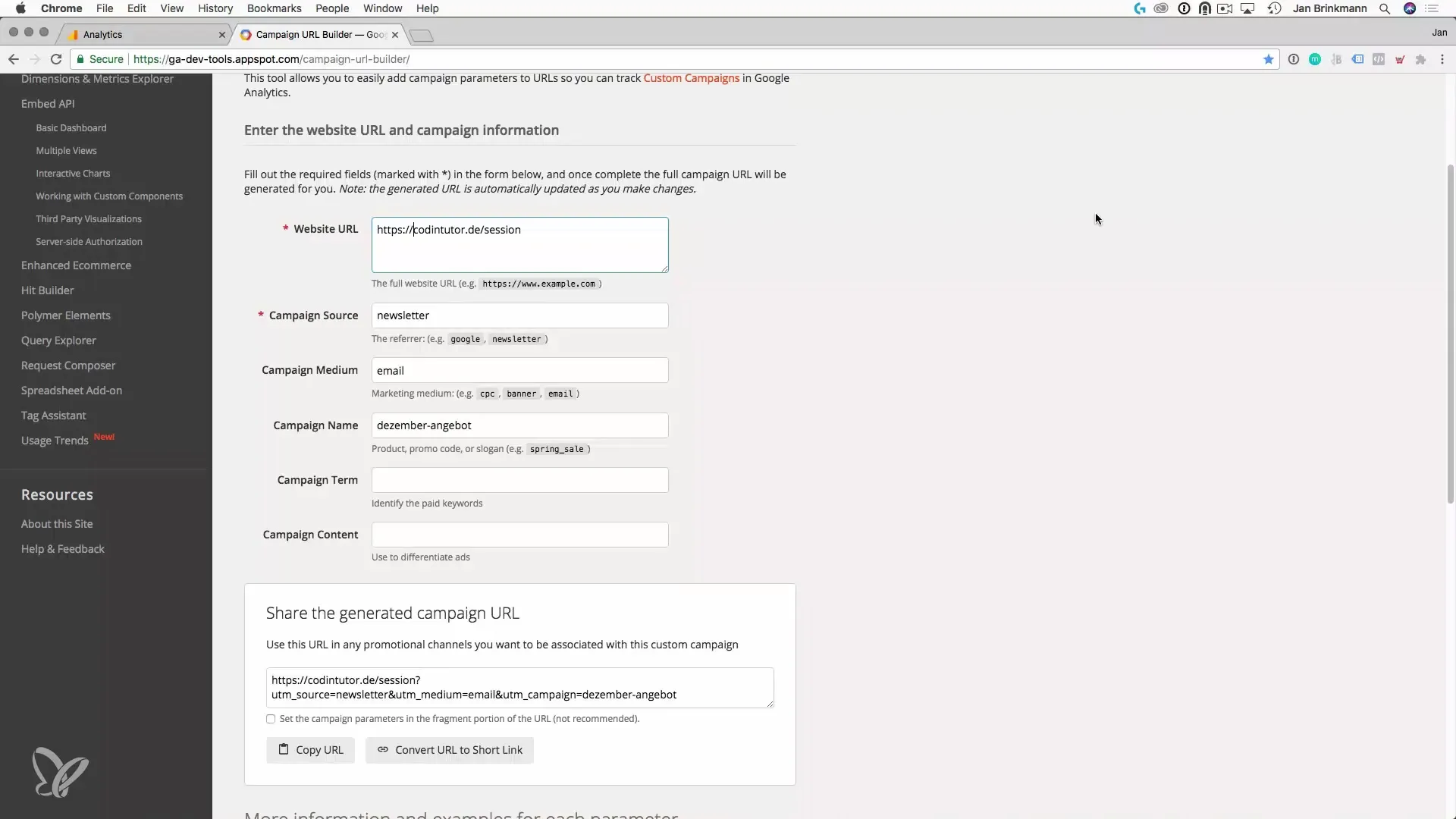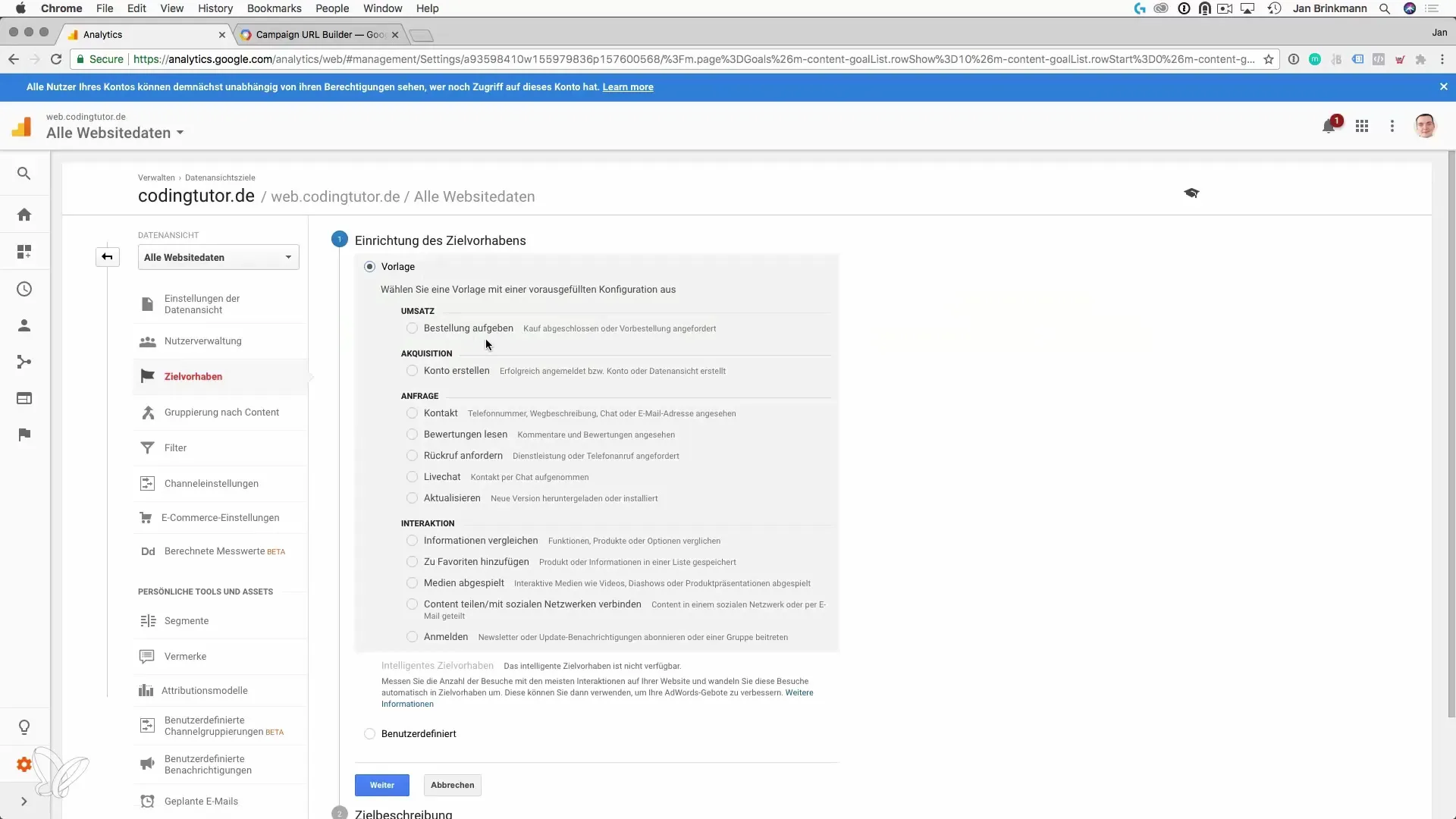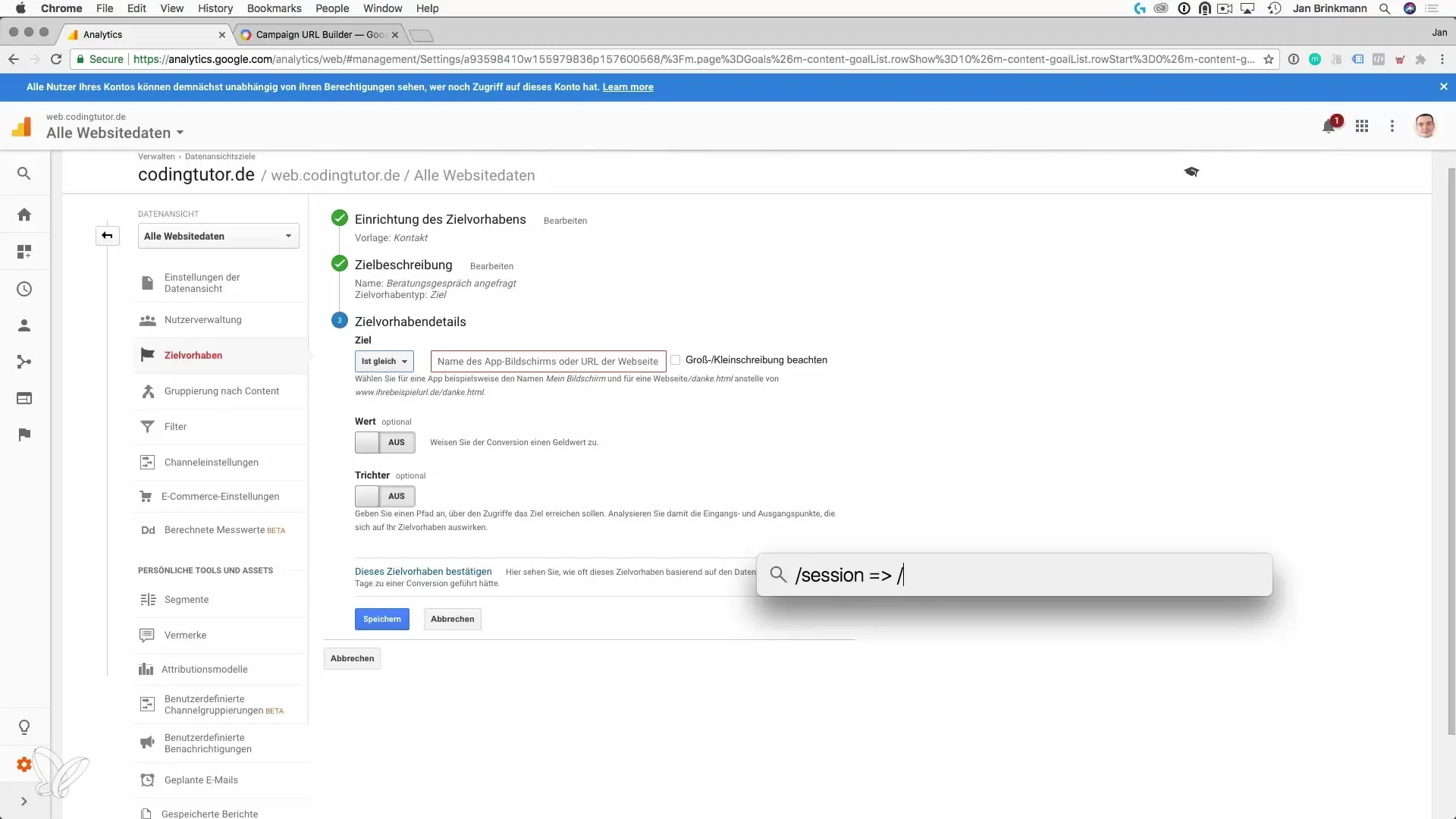With the right tracking technique, you can effectively measure the success of your marketing efforts and optimize them strategically. Creating UTM-Links is an essential method for tracking where your visitors come from and which channels deliver the best results. In this guide, you will learn how to create UTM links and successfully set goals to keep track of your marketing campaigns.
Key Insights
- UTM links allow clear attribution of your visitors' sources.
- Goals help you measure and optimize the success of your campaigns.
- By analyzing your visitors' origins, you can make better marketing decisions.
Step-by-step Guide
Step 1: Understand UTM Links
You first need to understand what UTM links are and how they work. These links are used to track the origin of the traffic on your website. You can add various parameters that provide information about the source, medium, and campaign name. This way, you can see exactly where your conversions come from.

Step 2: Define UTM Parameters
When creating your UTM links, it is important to define various parameters. These typically include:
- Campaign Source: The source, e.g. Facebook or Email.
- Campaign Medium: The medium, e.g. CPC or Newsletter.
- Campaign Name: The specific name of your campaign for easy identification.
Step 3: Create an Example UTM URL
Let's say you want to create a URL for a consulting offer. Your base URL could be web.codingto.de/session. You add the UTM parameters to generate a complete URL through which you can accurately track where your visitors come from. An example would be: web.codingto.de/session?utm_source=facebook&utm_medium=cpc&utm_campaign=beratung.

Step 4: Actively Use UTM Links
Now comes the exciting part: Use the UTM links in your various marketing channels. Make sure to always use the correct parameters so that the data is consistent. Whether it’s Facebook ads or email newsletters – ensure that you insert the links correctly.

Step 5: Set Up Goals
Goals are the next step to tracking the success of your campaigns. Go to your analytics platform and create a new goal. Define which action you want to track, e.g. submitting a contact form.
Step 6: Specify the Confirmation Page
Identify the confirmation page for your goal that a visitor sees after completing a desired action. This could be a page displayed after submitting a form. This way, you can ensure that only visitors who have completed the desired action are counted.

Step 7: Evaluate the Data
Regularly analyze the collected data to see which campaigns and sources are more effective. Check the conversion rates and compare the results. Identify which channels deliver the best results and adjust your marketing strategies accordingly.

Summary – Customer Acquisition through Facebook and Google AdWords: Creating UTM Links and Keeping Goals in Sight
Now you know how to create UTM links and implement goals in your marketing strategy. The precise analysis of the origin of your traffic sources helps you make informed decisions and continuously optimize your campaigns.
Frequently Asked Questions
How do I create UTM links?You can create UTM links by attaching a base URL with the appropriate UTM parameters, such as utm_source, utm_medium, and utm_campaign.
What are goals in Google Analytics?Goals measure whether visitors perform certain actions on your website, such as filling out a form or purchasing a product.
How do I analyze the effectiveness of my campaigns?Use data from Google Analytics to see which channels bring the most conversions and adjust your marketing strategy accordingly.
Why are UTM links important?UTM links help you understand where your traffic comes from and which marketing channels are most effective for you.


